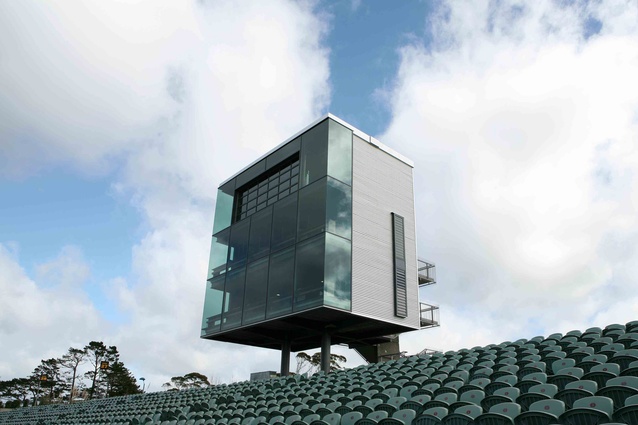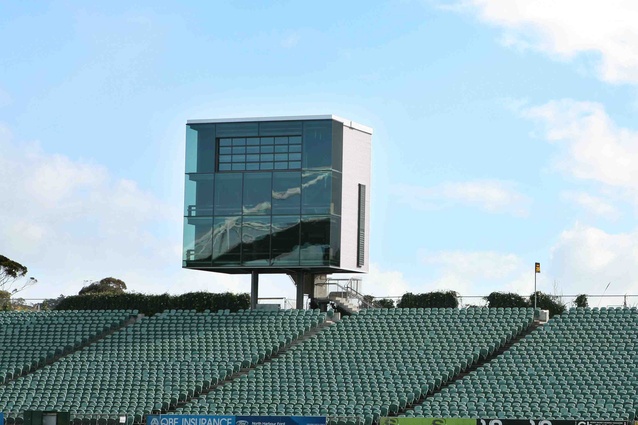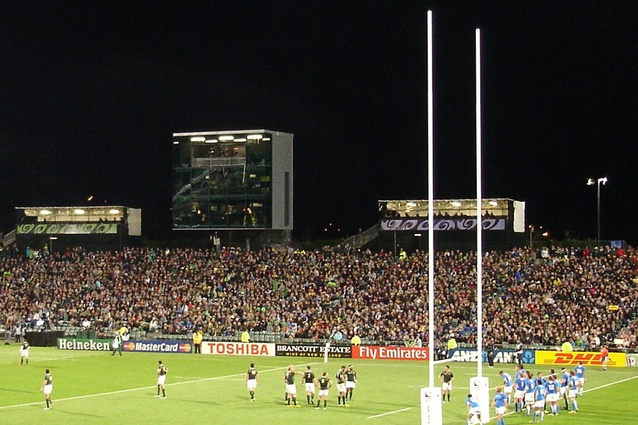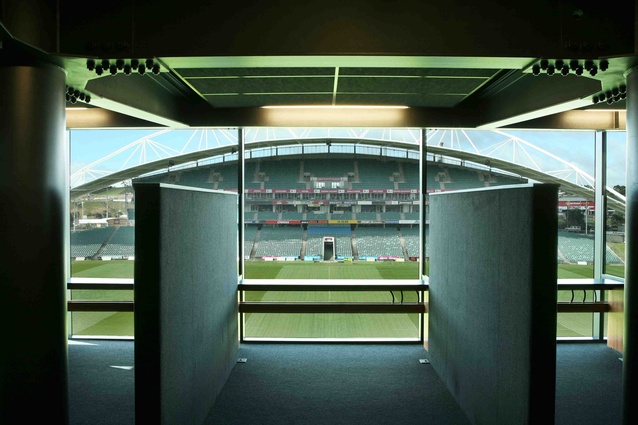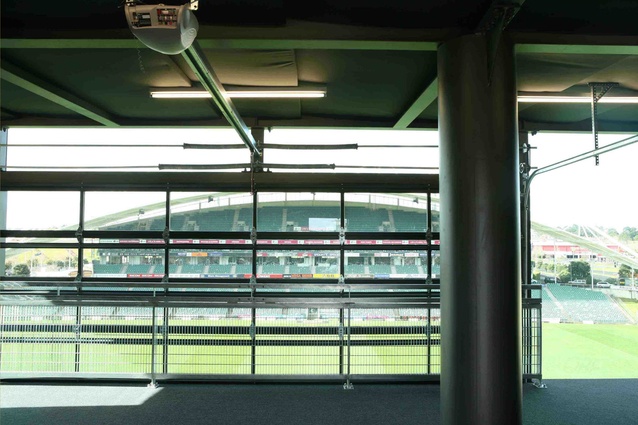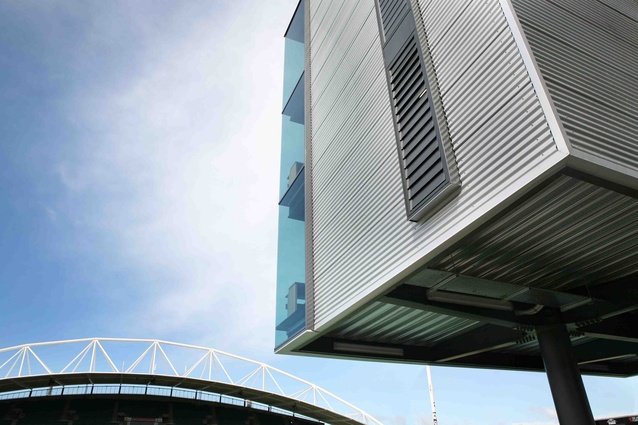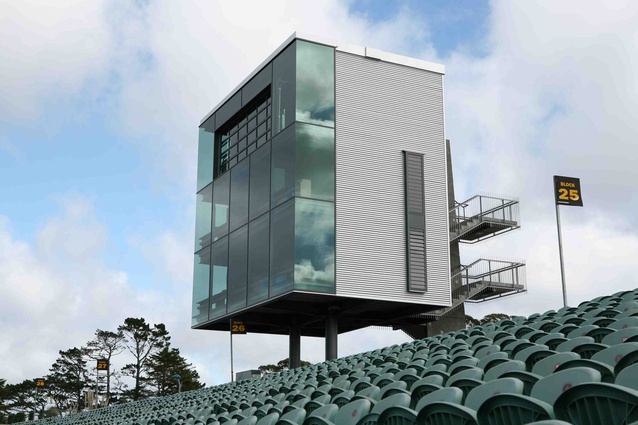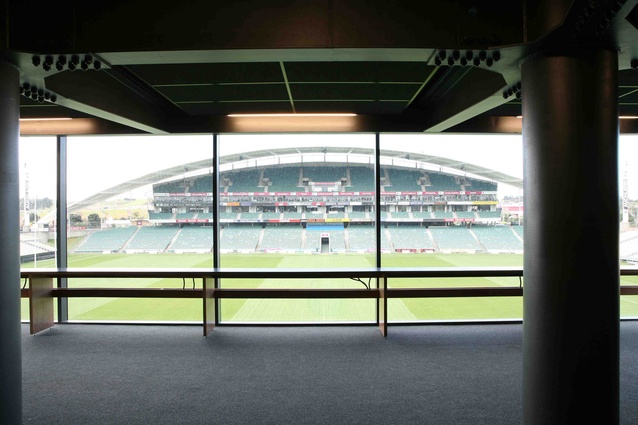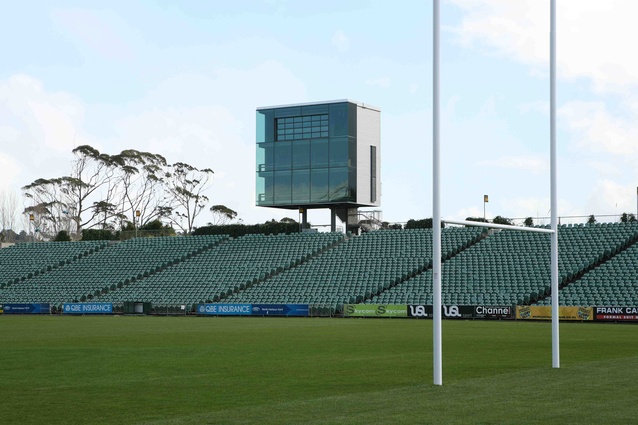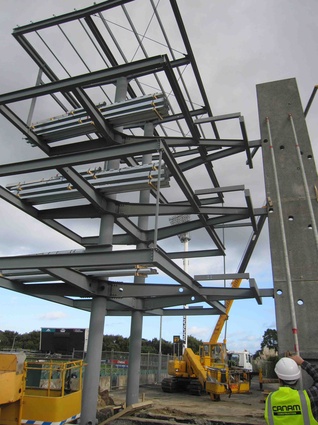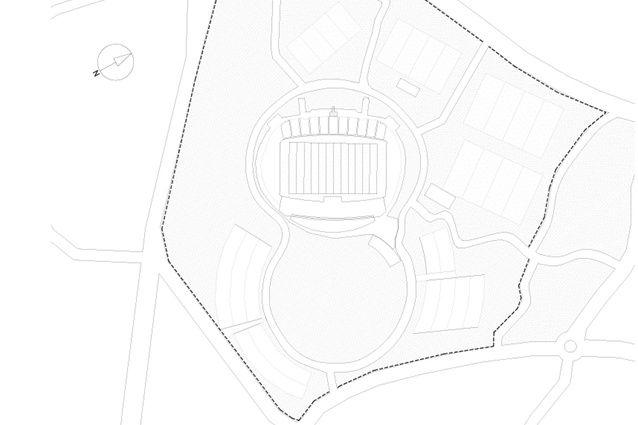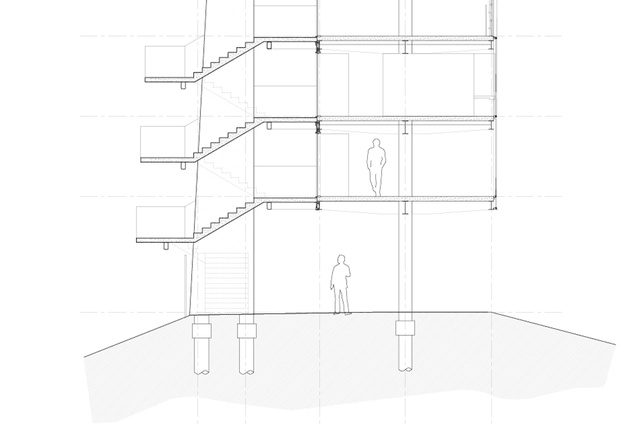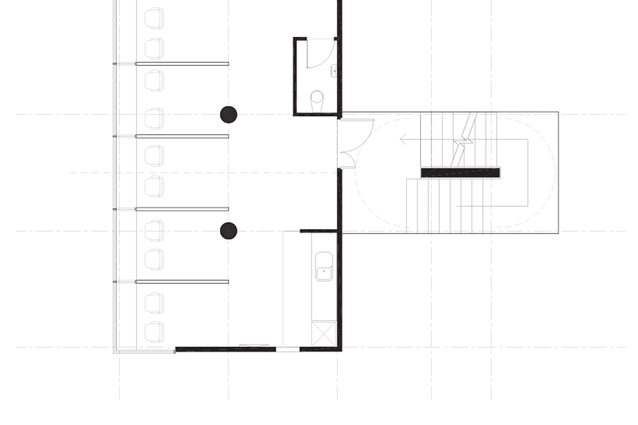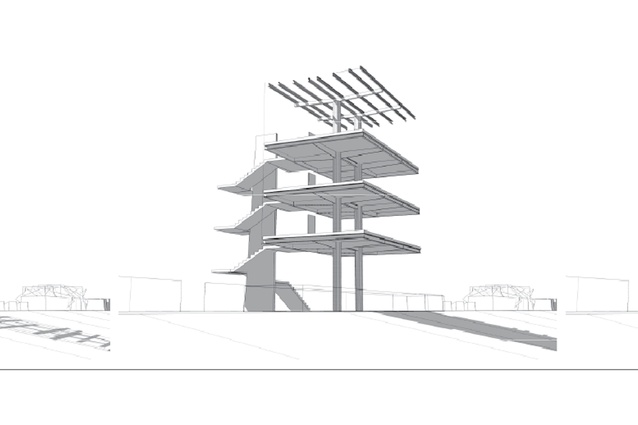Broadcast Tower
Albany was once a little village on the edge of the Auckland urban limit. Now it’s on its way to being a centre: the Super City’s northern urban hub. Cruise its looping crescents and drives now, under wide open skies, through even wider open car parks and you’ll see malls sprouting from paddocks and artificial lakes appearing to create an artificial heart to hold together a decade’s rash of developer housing. It’s a work in progress so, among all the decorated sheds, North Harbour Stadium’s great arch seems quite the architectural achievement, positively ancient and timeless in comparison. Hard to believe it’s only 15 years old; I suppose the preceding decades of typically Auckland argument before its inception make it seem twice that age.
And now, that big arch has acquired a small friend; on the opposite bank of the stadium, a mysterious black box has popped up, hovering over the terraces like a big plasma screen staring back at the fans. And, indeed, it is something to do with TV; this new structure, by Copeland Associates Architects, is an operations centre, usually dormant, that comes to life on game days. It’s used as a platform for broadcasting cameras and commentators, for general monitoring of events and as a base for emergency service liaison. Previously, all those functions were scattered around the stadium in temporary structures or taking up space in the main grandstand block.
A number of design studies led to this location on the far side of the stadium but it has several distinct advantages. Space in the main building is freed up for customers, caterers and so on, and the structure’s distance confers safe separation if the main building and stadium needed to be evacuated. Primarily though, it’s a great vantage point from which to see everything that’s happening, not just on the field, but in the main grandstand and around the stadium. With broadcasting cameras now opposite that big arch which is emblematic of the stadium, television coverage give each viewer a better experience of, not just the game, but the whole event, crowd included, with both field and main grandstand in shot. This location is also handier for vehicles and staff loading in and out, keeping the main gate free for the crowd.
The Broadcast Tower launches itself into the air as lightly as possible so as to float above the stadium. Minimal structure was needed: something the engineers interpreted as requiring four legs, although what the architects had in mind was one. Two legs seems a nice compromise but the pre-cast concrete fin, supporting the open stairwell at the rear, provides a useful brace in the other direction.
Of course, these pilotis have a practical purpose as well: raising the box above the concourse to facilitate crowd circulation while improving the 30 or so occupants’ vantage points. On the first level is the Incident Control Point where stadium managers, emergency liaison staff, security and even the event promoters cast cool eyes over proceedings. Next level up, sits a slightly more excitable lot: the radio and TV commentators, as well as the video ref, if you want to know where to throw stones. And on the top level, way up in the air, are the cameras. A sectional door retracts to open the box and allow the cameras out. The two hollow steel legs continue as columns running up through the centre of the structure, carrying services and wiring as well. While these may seem easier to collide with in their central locations, crucially this frees up corners for glazing and that’s paramount to the performance of this box where all the inhabitants occupy the periphery, peering out at the view.
These glazed corners also provide great spots for sports presenters to do their stand-ups to camera with the whole stadium visible and buzzing away in the background. And, like studio spaces, the interiors of these levels are fairly prosaic; the nuts and bolts of the structure are visible, with dim lighting and dark light, and sound-absorbent materials. A couple of louvred windows usefully provide good and immediate cross-ventilation, as well as allowing staff to listen to the mood of the crowd when required.
This Broadcast Tower maintains the nice simplicity and functionality that the stadium already has, yet shows how good architecture can be when you keep it simple. It’s just a box but it’s a box done well. Funny how the best architecture in Albany’s on the footy field. And what’s even more surprising is that it was created in months for the Rugby World Cup; design was started in January and it was in use by August.
And was it handy having a Minister of Footy looming over you? Not really, there were no short cuts in funding or consents and, of course, the Super City transition process was good for a bit of bureaucratic paralysis. The efficiency here was down to architect, client and contractor. In architecture, everyone wants the job done cheaply, well and quickly. Usually you just get achieve of those. This job has managed all three.

